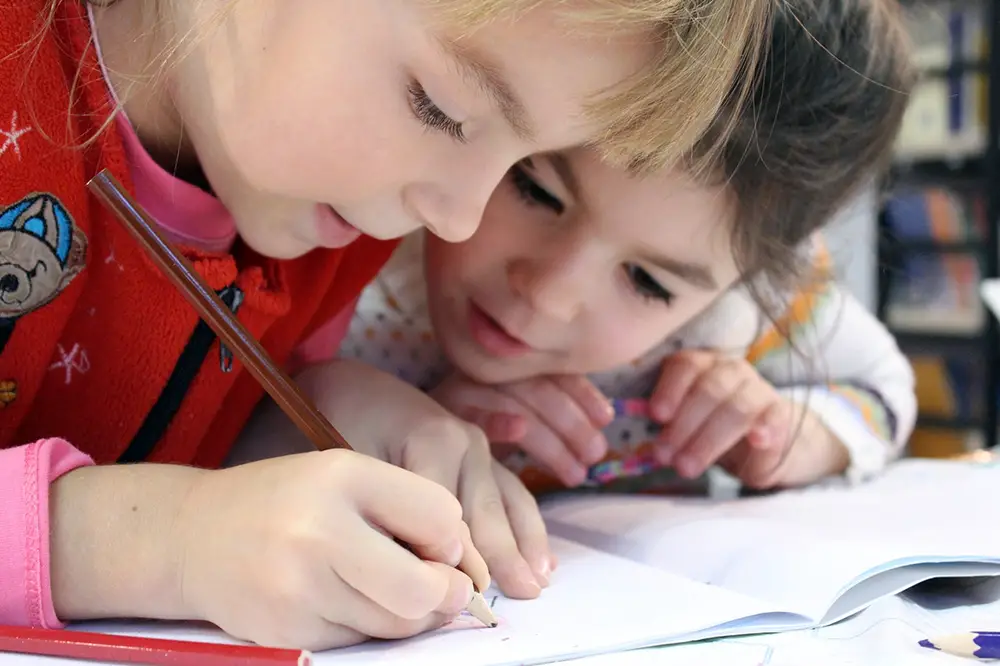In the past few years, the awareness of language disorders has increased, but unfortunately, some conditions are still in the shadows. Among them is Developmental Language Disorder, for DLD for short.
In this article I share with you 20 important facts about Developmental Language Disorder.

1. What is Developmental Language Disorder?
Developmental Language Disorder (DLD) is a type of speech, language and communication need that affects the way children understand and use language. It is identified when a child has problems with language development that continue into school age and beyond.
2. Developmental Language Disorder Awareness Day
Developmental Language Disorder Day was launched in September 2017, shortly after this term was chosen to represent the disorder. It is now celebrated every year on October 18th. Its goal is to help spread knowledge about how common DLD can be in children’s lives. On this day, people learn about DLD and can sign up with organization to become ambassadors for DLD if they have had personal or medical experience. People also donate to the website organization that raise awareness of this condition.
3. DLD is very common
For example, if your class at school was made up of 28 students, there would be about two students in your class with DLD. According to a 2016 study from the UK, Developmental Language Disorder affects 7.58% of children.
4. DLD has been given different names in the past
Sometimes, being labeled with an “impairment” made it difficult to raise awareness, and also for professionals to talk about the condition and for children with DLD to get help. Historically, terms such as “developmental aphasia”, “specific language impairment”, and “primary language difficulty’ have all been used as a diagnosis. The term “Developmental Language Disorder” had been in usage for several years but then the term was officially chosen and is currently in use by all specialists and the public at large.
5. The term ‘DLD’ was chosen in 2016-2017
An international group of 57 experts were the ones who agreed to use the term ‘Developmental Language Disorder’ for the cases when the language disorder is not associated with a known condition such as autism spectrum disorder, brain injury, genetic conditions such as Down’s syndrome and sensorineural hearing loss. In the situations when a child does have a condition, the panel recommends a diagnosis of “Language Disorder associated with X” (where X is the condition).
LEARN MORE: 20 Amazing Facts about EMMA M. NUTT, the World’s First Female Telephone Operator
6. The causes of DLD are not well-known
Even though a lot of research has been done about Developmental Language Disorder, the reason behind why some children have it and others don’t is not known yet. There’s a possibility that DLD is the result of a mixture of different factors, some of them being biology, cognition and environment. Take in consideration the fact that there is no recipe for biological, cognitive and environmental guidelines to guarantee that a child will have DLD or that a child will not have DLD.
7. It might be strongly influenced by genetic factors
The best proof comes from the twin study method. Although two twins growing up together are exposed to the same home environment, they may differ a lot in their language skills. Such outcomes are, however, much more likely to happen for non-identical twins, who are genetically different. On the other hand, identical twins share the same genes and tend to be much more similar in language ability.
8. Differences in cognition may contribute to DLD
Cognition refers to the ways in which we learn new information, think about it and use it. These processes are different for every child. For example, children will have different processing speeds and different memory capacities. These variations can play a role in whether a child has Developmental Language Disorder or not.
9. Gender prevalence
It has long been noted that males are more affected by DLD than females, with a sex ratio of affected males to females at around 3 or 4 to 1 (3/4:1). However, the sex difference is much less noticeable in epidemiological samples, suggesting that similar problems may exist in females but are less likely to be detected, because they’re under-identified. The reason for the sex difference is not well understood.
10. DLD doesn’t have a bio-marker
There’s no evidence of any brain damage in the vast majority of cases. Even though there may be some differences in size of different brain regions and proportions of grey matter, this is inconsistent from child to child. We still don’t have a measurable indicator of some biological states or conditions for Developmental Language Disorder.

11. The environment in which a child grows is important
A child’s environment can either increase or decrease the risk of the child having this condition. However, the well-known statement that DLD is caused by poor parenting and a lack of appropriate language input during early development has no actual support.
12. DLD is defined purely in behavioural terms
There is no biological test for a diagnosis. There are three points that need to be met for a diagnosis of DLD:
1) The child has significant language deficits relative to age expectations that create obstacles to communication or learning in everyday life;
2) The child’s language problems are persistent and unlikely to be resolve by five years of age;
3) The problems are not associated with a known biomedical condition.
13. Red flags of DLD
They vary, depending on the child’s age. The common benchmarks for one year olds include: no reaction to sound, difficulty feeding, no imitation, and/or limited use of gestures. When they’re two years old, children with Developmental Language Disorder make minimal attempts to communicate with gestures or words, have not spoken their first words yet and find it difficult to follow simple directions. Later on, they speak only in simple sentences, their speech is not understandable, and they answer questions and interact with their peers with difficulty.
14. The treatment for DLD
Currently, the treatment varies and many common approaches lack a strong evidence based. For interventions to be effective, they must be of high quality and of sufficient duration. It has been shown that interventions delivered by teaching assistants during class time, who are trained and supported by the educational system they are part of, can bring significant gains in language and literacy improvement.
15. DLD is a changing picture
Even though children with DLD need more opportunities and assistance to support their language development, learning continues as they grow. Because of this, the profile of language strengths and weaknesses will differ for a child with Developmental Language Disorder as that child grows. This means that the learning difficulties and language traits of a young child with DLD will not be the same as when that child becomes an adult with DLD. It takes on different forms over time.
16. Common challenges for a child with DLD
The most usual are: making grammar mistakes (children with Developmental Language Disorder have trouble using proper grammar), trouble with sounds (this type of difficulty is especially common when children are very young), and properly using language in social situations (children with DLD may have trouble sharing information and telling stories.) It might also be hard for them to express their feelings.
17. DLD rarely occurs solely
Children with DLD are at increased risk for a range of co-occurring conditions such as: ADHD, reading disorders (for example, dyslexia), speech sound disorders etc. During their teenage years, children with a history of Developmental Language Disorder are twice as likely as their peers to experience internalising, externalising, and ADHD-type psychopathologies and approximately 1/3 of adolescents that are referred to mental health services have an unidentified language disorder.
18. People who are learning English as an additional language and children with DLD face similar language struggles
It is usually hard to tell if a person learning English as an additional language has DLD or just needs more time to improve his or her English. If the problem is Developmental Language Disorder, it will affect the child’s native language as well as any other language the student is learning.
19. There are no physical signs of having DLD
Many who meet an individual with Developmental Language Disorder will not be able to detect it. Furthermore, a lot of people with DLD are able to develop the language skills necessary to communicate in their daily life. However, the more demanding the situation, the more likely the signs of DLD will show.
20. Ways you can help a child with DLD
Some of them are: talking with them to help them enrich their vocabulary; listening and answering when they talk; making them ask you questions; giving them enough time to answer yours; using short, simple sentences whenever you can, and slowing your rate of speech down a bit to give them a chance to process the information.
Sadly, there are plenty of cases when DLD is misinterpreted as laziness or lack of attention. On the Developmental Language Disorder Awareness Day and during the rest of the year as well, we should show love and support towards the people who have been diagnosed with DLD and appreciate the efforts of all educators and specialist in helping those affected.
Watch the video presentation:
Resources: RCLST 1, ACAMH, Frontiers, Days of the Year, RCSLT 2, Wikipedia, DLDandME, Speech Blog UK


